
Reuben John Kirkham (13 October 1845, Spalding, Lincolnshire - 17 April 1886, Logan, Utah) [1] was an American landscape painter.

Reuben John Kirkham (13 October 1845, Spalding, Lincolnshire - 17 April 1886, Logan, Utah) [1] was an American landscape painter.
His family emigrated to the United States while he was still a child. His sister, Ann, married a member of the LDS Church and, eventually, the entire family converted. [2] Various problems kept them from reaching the Salt Lake Valley for almost a decade, but they finally arrived in 1868. [3]
The gift of a paint box several years earlier had given him the desire to become an artist, and he taught himself while performing odd jobs. After a time of wandering, he made friends with the painter, Alfred Lambourne, a fellow Englishman, and they painted scenes for the Lehi Music Hall. Many of his later landscapes would contain imaginary features. A trip back East in 1874, with the intent of taking formal lessons, ended with his money being stolen. [2]
In 1876, he married Echo Levinia Squires (1856-1943), from an early pioneer family. They had five children. [1]
Inspired by his early theatrical work, he began creating panoramas. The first, created together with Lambourne, featured scenery from throughout the United States. Later, he spent two years (1883-1885) touring Utah with a nineteen scene panorama, based on episodes and places from the Book of Mormon. [3] The presentation included live performances.

Never in very good health, he died in 1886 from what was officially diagnosed as "typhoid pneumonia". Echo maintained that he died from exposure to the chemicals in his paints. [2]

Frederic Edwin Church was an American landscape painter born in Hartford, Connecticut. He was a central figure in the Hudson River School of American landscape painters, best known for painting large landscapes, often depicting mountains, waterfalls, and sunsets. Church's paintings put an emphasis on realistic detail, dramatic light, and panoramic views. He debuted some of his major works in single-painting exhibitions to a paying and often enthralled audience in New York City. In his prime, he was one of the most famous painters in the United States.
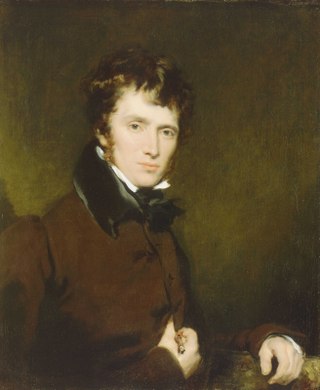
Clarkson Frederick Stanfield was a prominent English painter who was best known for his large-scale paintings of dramatic marine subjects and landscapes. He was the father of the painter George Clarkson Stanfield and the composer Francis Stanfield.

A diorama is a replica of a scene, typically a three-dimensional model either full-sized or miniature. Sometimes it is enclosed in a glass showcase for a museum. Dioramas are often built by hobbyists as part of related hobbies such as military vehicle modeling, miniature figure modeling, or aircraft modeling.

In the Book of Mormon, Limhi is the third and final king of the second Nephite habitation of the land of Lehi-Nephi. He succeeds his father, Noah. Led by Ammon, Limhi and his people escape from the Lamanites with his people to the land of Zarahemla.

Jacques Courtois or Giacomo Cortese, called il Borgognone or le Bourguignon was a Franche-Comtois–Italian painter, draughtsman, and etcher. He was mainly active in Rome and Florence and became known as the leading battle painter of his age. He also created history paintings and portraits. He became a Jesuit later in life but continued to paint.

John Atkinson Grimshaw was an English Victorian-era artist best known for his nocturnal scenes of urban landscapes. He was called a "remarkable and imaginative painter" by the critic and historian Christopher Wood in Victorian Painting (1999).
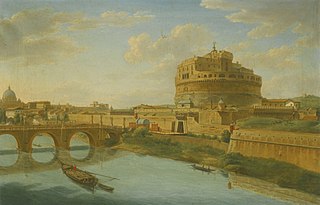
A veduta is a highly detailed, usually large-scale painting or, more often, print of a cityscape or some other vista. The painters of vedute are referred to as vedutisti.

Carl Christian Anton Christensen was a Danish-American artist who is known for his paintings illustrating the history of the Church of Jesus Christ of Latter-day Saints. Of him it has been said that he "did more than any other person to capture the images of the history of Mormon migration to Utah and the life lived there".

Arnold Friberg was an American illustrator and painter noted for his religious and patriotic works. He is perhaps best known for his 1975 painting The Prayer at Valley Forge, a depiction of George Washington praying at Valley Forge. He is also well known for his 15 "pre-visualization" paintings for the Cecil B. DeMille film The Ten Commandments which were used to promote the film worldwide and for which he received an Academy Award nomination.

Franz Albert Bischoff was an American artist known primarily for his China painting, floral paintings and California landscapes. He was born in Steinschönau, Austria. He immigrated to the United States as a teenager where he became a naturalized citizen. While in Europe, his early training was focused upon applied design, watercolor and ceramic decorations.
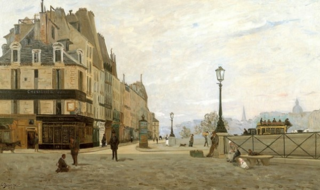
Hippolyte Camille Delpy (1842–1910) was a French painter.
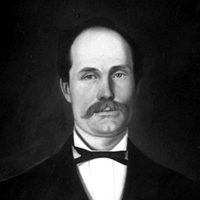
Lorus Bishop Pratt was an American landscape painter and missionary. In 1890, he was one of a group of painters who studied in Paris under the sponsorship of the Church of Jesus Christ of Latter-day Saints, in preparation for painting murals at the nearly completed Salt Lake Temple.
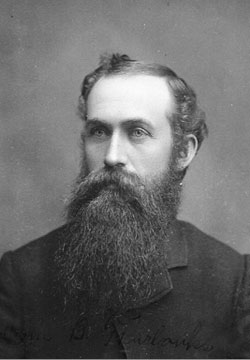
John B Fairbanks was an American landscape painter. In 1890, he was one of a group of artists who studied in Paris under the sponsorship of the Church of Jesus Christ of Latter-day Saints, in preparation for painting murals at the nearly completed Salt Lake Temple. He painted murals in the Salt Lake Temple and the Mesa Arizona Temple that still exist today. Fairbanks was the official photographer for the South American expeditions of Benjamin Cluff. Fairbanks was the first artist to live and paint in Zion National Park. He was an early art instructor at Brigham Young Academy and was one of the founding members of the Utah Art Institute. Fairbanks was the father of artists John Leo Fairbanks, Ortho Lane Fairbanks and Avard Tennyson Fairbanks (sculptor).

Alfred Lambourne was an English-born American artist and author. In the 1860s, he and his family moved to the American West with the Mormon pioneers. He is best remembered for his paintings, but he also wrote short fiction for Mormon periodicals, and other works of musings and poetry.
Lynn Fausett February 27, 1894 – August 27, 1977) was an American painter. He attended and later became president of the Art Students League in New York City. He painted murals in the Nebraska State Capitol and St. Bartholomew's Church. Fausett is also the muralist of The First Meeting of the Primary Association depicting the establishment of the Primary Association in the Farmington Rock Chapel for the Church of Jesus Christ of Latter-day Saints.

Jan Stobbaerts or Jan-Baptist Stobbaerts was a Belgian painter and printmaker. He is known for his scenes with animals, landscapes, genre scenes and portraits or artists. With his dark-brown studio tones and forceful depiction of trivial subjects, Stobbaerts was a pioneer of Realism and 'autochthonous' Impressionism in Belgium.
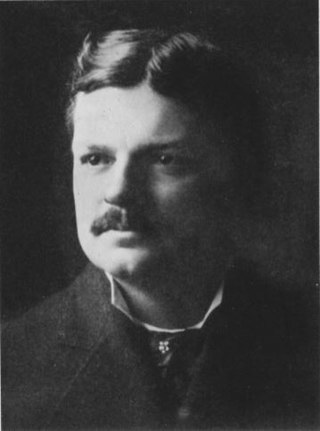
Henry Lavender Adolphus Culmer, sometimes referred to as Harry Culmer or Henry L. A. Culmer was a painter/scientist, illustrator, and educator.
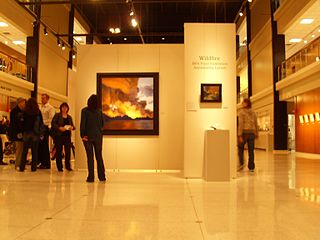
B.F. Larsen was an American art educator and painter. He taught art at Brigham Young University for five decades, and he was the chair of its Department of Art. He painted French and Utahn landscapes.
Cornelius Salisbury was an American painter and educator. His artwork, which depicts scenes from the Old West and Utahn landscapes, can be seen in many public schools in Utah and at the Springville Museum of Art.
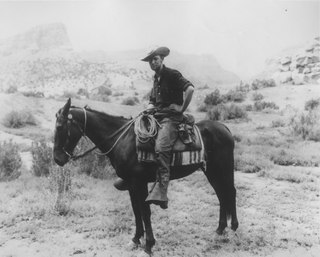
Donald Beauregard was an American painter and charcoal drawer. Trained in Utah and France, he painted the landscapes of the American West. He died at age 30.
![]() Media related to Reuben Kirkham at Wikimedia Commons
Media related to Reuben Kirkham at Wikimedia Commons